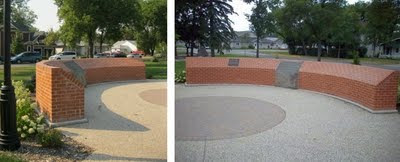Annie B. Barnes of Sundre, Alberta, is no stranger to the Doukhobor movement. She wrote a play about her Doukhobor grandmother who came to Canada on S.S. Lake Huron ship in 1899 which premiered at the Canadian Learned Societies Meeting in Calgary in 1994. Then she researched an article on 'Doukhobor women in the twentieth century' in which she presented the inner voices of the Doukhobor women who until then did not have a chance to reveal their societal worth as homemakers and career people (Tarasoff, ed., Spirit Wrestlers' Voices, 1998: 13-35).
In this first novel, Barnes continues the trend of Doukhobor women coming of age and speaking out and having a feeling of belonging to the group as well as to this world. Her experiences in coming from a blended family, with intermarriage, moving from Saskatchewan to British Columbia, and identity crisis is all paralleled in this novel. It begins and ends in Tula, Russia near the home of Lev N. Tolstoy the most famous Russian philosopher and writer who assisted the Doukhobor migration to Canada.
The book's title with its unifying thread is a ring made of amber — a yellowish translucent fossilized resin derived from extinct trees and used in jewellery. The story is about two teens in the Caucasus during the late 1800s who fell in love, but could not marry because their parents belonged to different ideological camps — the Big Party under the leadership of Peter V. Verigin, and the Small Party lead by the Gubanovs (direct relatives of the leader Anastasia Gubanova who died in 1886 in Goreloe village).
The heroes are Gregory Gubanov who presents an amber ring (with three missing diamonds) to his sweetheart Anastasia Glukov just before she left for Canada in 1899, as an act of secret engagement. He never saw Anastasia again, but would tell his father that the time would come when the Doukhobors would reunite in Goreloe village. So he hoped Anastasia would return to him then.
This reunion of love would never occur. However, the twists and turns of four generations of Doukhobor life in Canada brought out the sorrows and joys of family life including family break ups, with a new set of names: Palagea (Polly), Mikhailo Popov, Sam Negraev, Marusia, Alex (non-Doukhobor), Alexandra, Barbara Ellen, Grandfather Sam, Sofia and Stanley (Jewish owners of apartment in Vancouver), Sofia and Emma in Odessa, Tatiana and Sergei of St. Petersburg, Ivan Grigorovich Gubanov, Alexei Ivanovich Gubanov and son Victor in Tula.
Inter-group and intra-group conflicts were at play. When Palagea and her husband Sam (Independent Doukhobors who did not believe in spiritual leadership) moved from Saskatchewan to British Columbia, Palagea said:
'I wanted to go back to Saskatchewan. We don't belong here. The English don't want us because we're Doukhobors and the Doukhobors don't want us because we're Independent, not Community Doukhobors....' (p. 59).
There was also the nostalgia factor: how much should we look back to our communal Russian roots and how much should we adopt western values of private enterprise with emphasis on profit? A similar struggle has played out in the present Russian Republic with the collapse of the Soviet Union in 1989 under an encouraged and supported Western rapid shock strategy.
The range of characters is international. The love story is only revealed at the end. The beautiful ring, mostly hidden for over a century in the hem of a women's woolen skirt had gone through a metamorphosis of fear and healing. It was a long journey, but love finally triumphed, as Marusia and Alexei Ivanovich exchanged rings of love. Doukhobor-Russian roots were finally validated as the identity crisis came to an end.
Author Annie Barnes used her imagination to include scribblers (of her mother's diary) and letters as part of her way to reveal this broad human landscape of sorrow, death, love and joy, in a kind of modern-day Shakespearean drama.
Transliteration of Russian words into English was frequently used as a folkloric device to provide a sense of place and time. Yet in another sense, it was used to bridge the realities of East and West, of Russia and Canada, of distance and strangers. Below is an example of these words transliterated appropriately (thanks to the author's careful research including consultation with Doukhobor scholars and books). Proper transliteration is important for the standardization of certain words, thereby making it accessible to the wider world.
- babushka — grandmother
- borshch — traditional cabbage soup
- chemodanchik — small suitcase
- chekhol — cotton cover
- kasha — porridge
- lapsha — broad noodles
- lekharka — healer
- nedostatok —flaw
- Novyi God — New Year
- poka — 'till we meet again, later
- Pescheri — caves
- pesni — folk songs
- plakun trava — the grass that flows against, not with, the river current
- platok — shawl for head
- plov — rice dish
- proshchanie — farewell
- psalmy — prayers, Psalms
- skazka — a fairy tale
- spokoinoi notche — peaceful night, goodnight
- Sirotskii Dom — Orphan's Home / administrative centre in 1800s
- stikhi — hymns
- sukhari — dried bread
- vareniki — boiled dumplings
- vecharushki — evening parties
- rabota — labour, work
- Vechnaya Pamyat — everlasting memory
- zapoi — the engagement
Well done, Annie! Poka!





